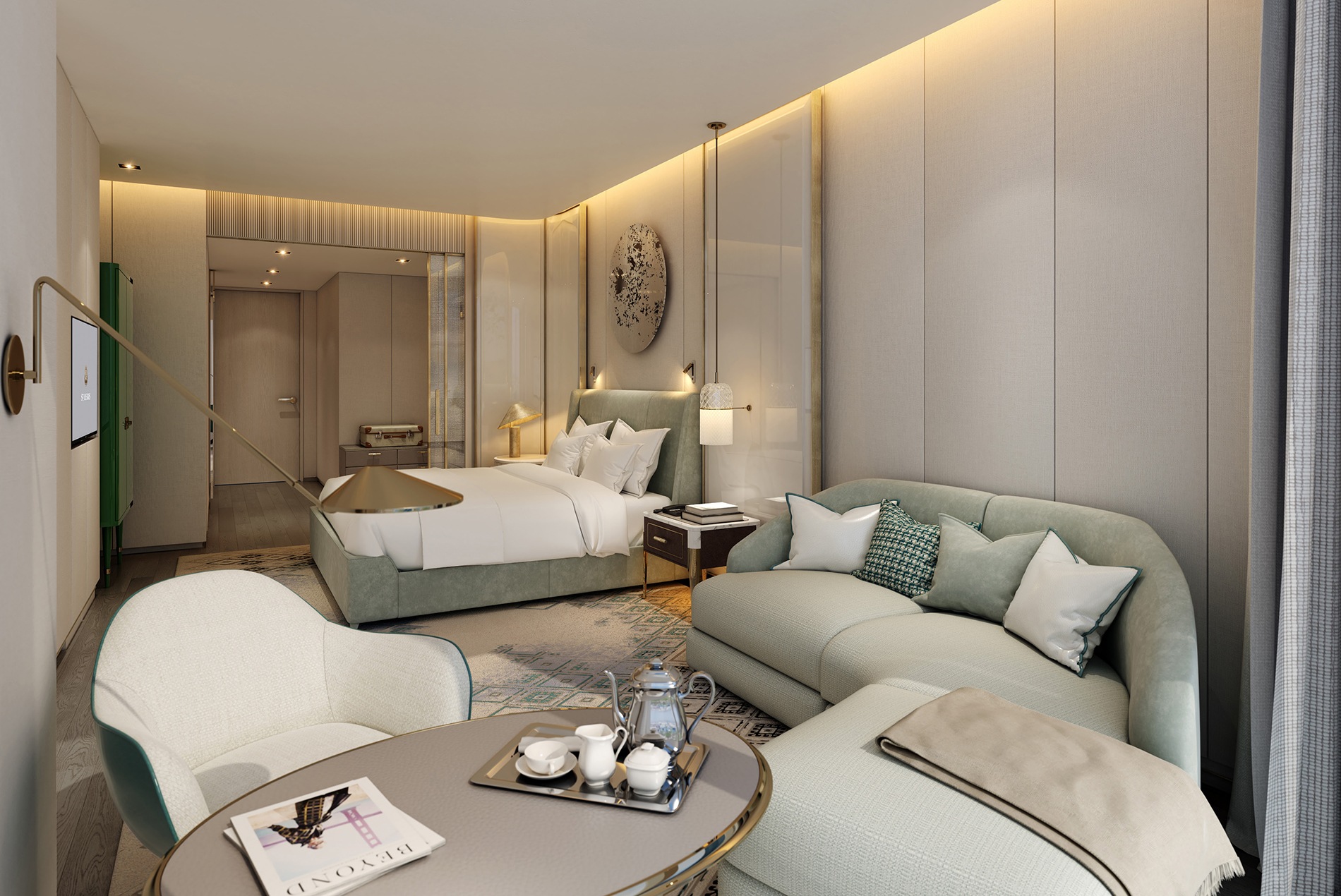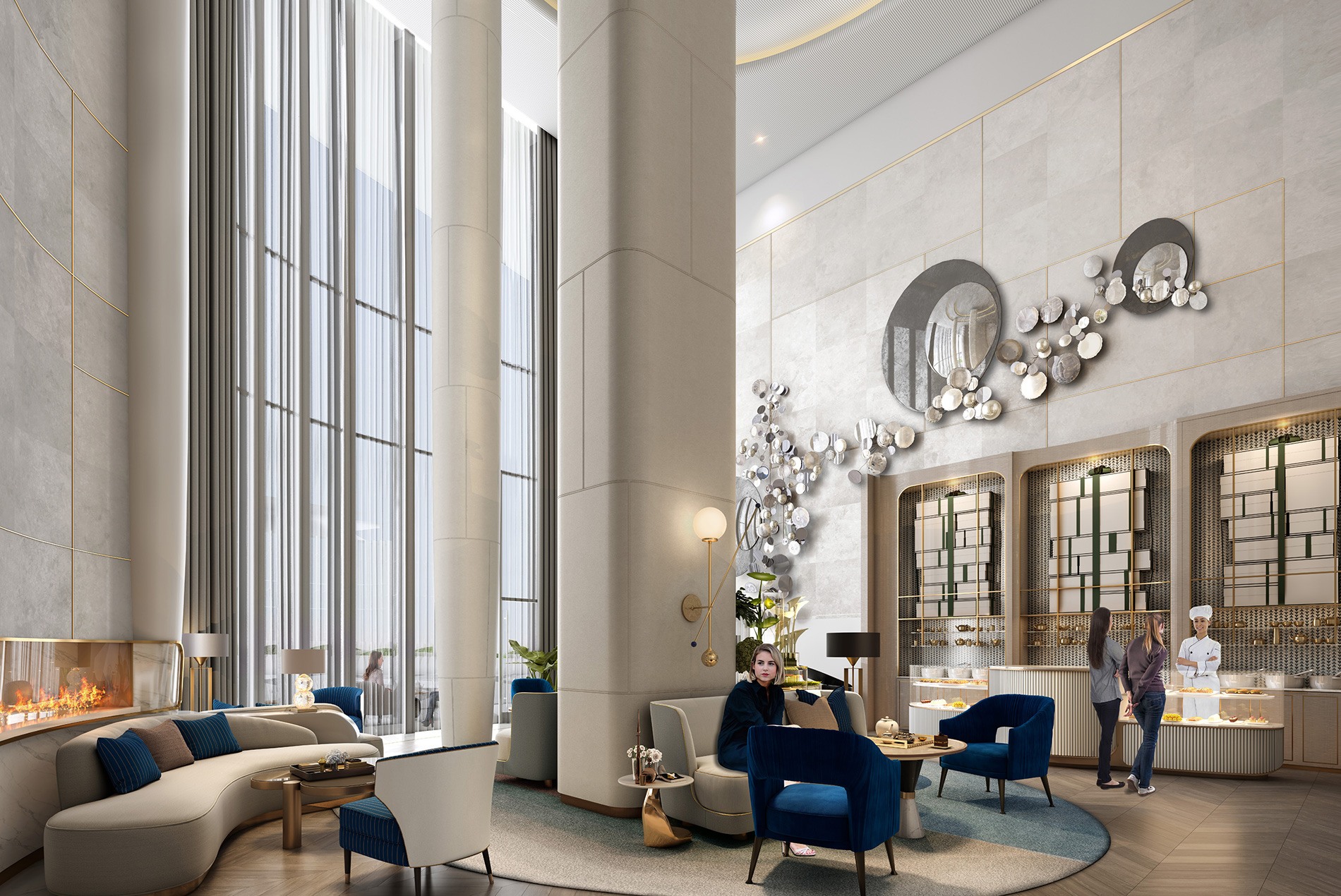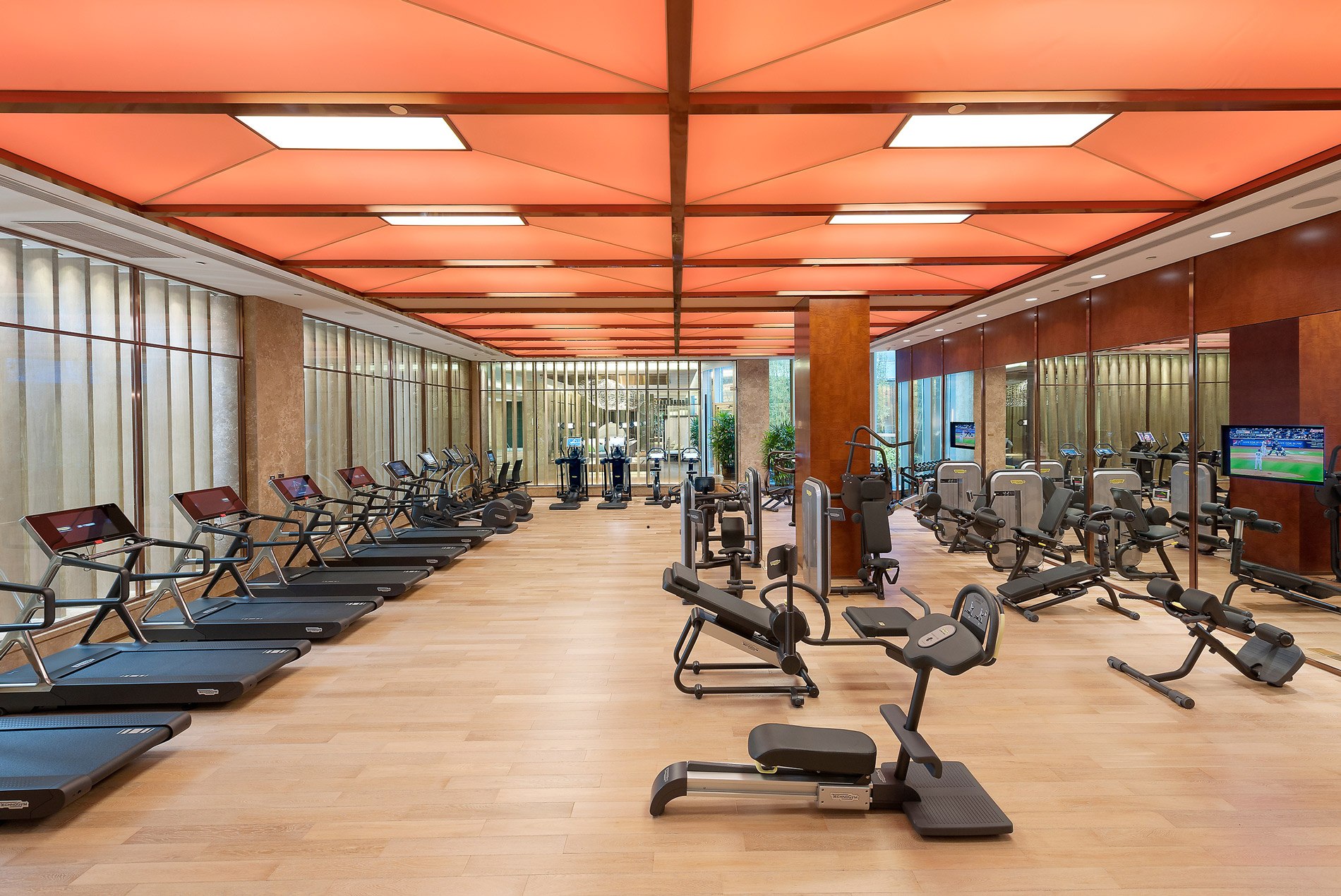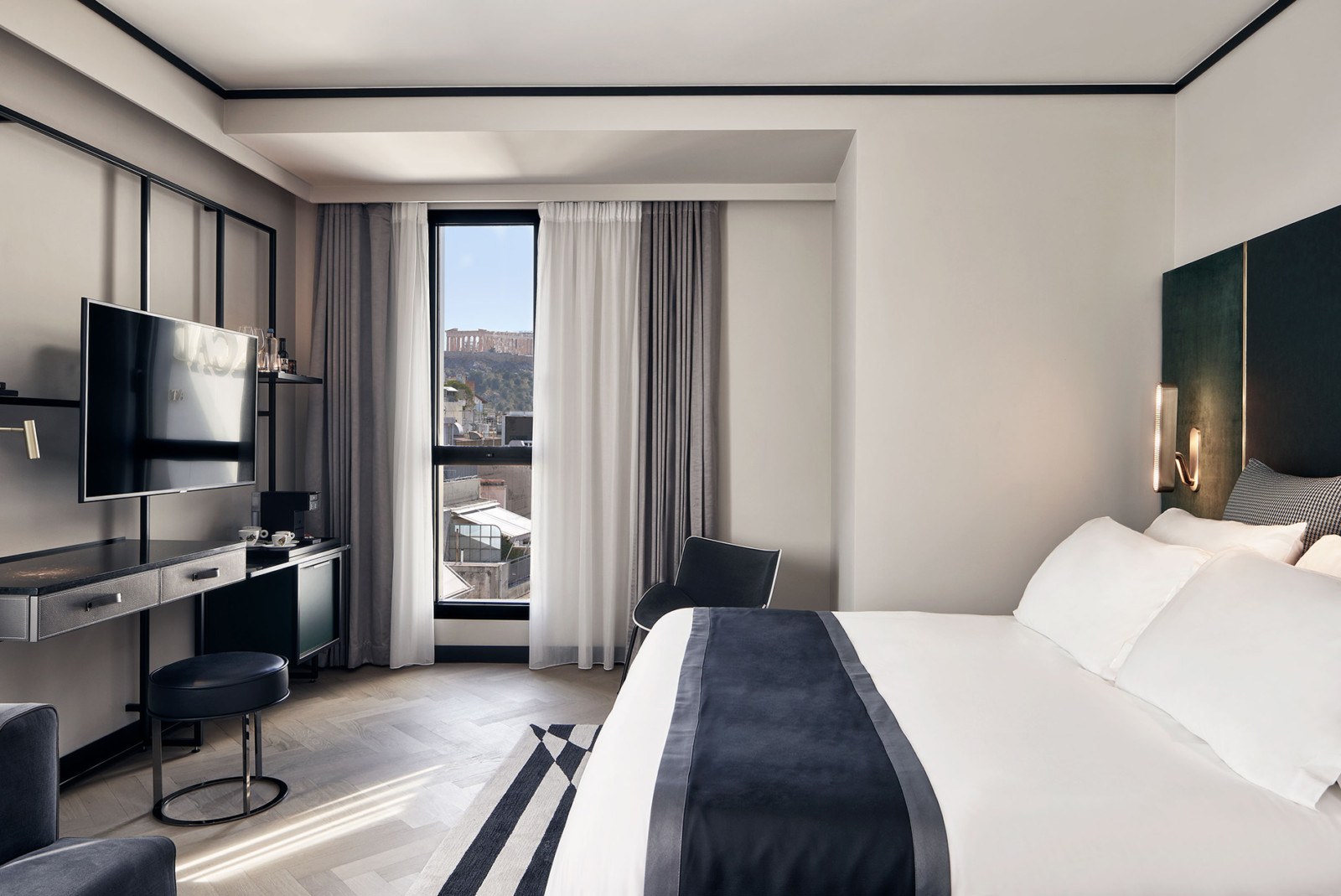J Lee Rofkind, regional leader of Hospitality in Asia Pacific, and Laura Jones, regional leader of HOK’s Hospitality practice in Canada, share insights on how hotels and the hospitality industry can rebound from the coronavirus pandemic.
It cannot be sugarcoated. COVID-19 has struck a devastating blow to the hospitality industry. Occupancy is down by as much as 95 percent in some markets, thousands of employees have been laid off or furloughed, scores of new projects are on hold, and, at the time of this writing, it remains unclear when conditions will improve.
Yet when things do improve—and they will—what new expectations might travelers and guests have when choosing a hotel? And what can hoteliers do now to prepare for new demands and requirements that will follow COVID-19?
From conversations with clients, developers and industry colleagues, HOK’s J Lee Rofkind and Laura Jones offer the following focus areas, strategies and next steps for getting back to business.

Guest Health and Wellness
The industry will not rebound to normal occupancy levels until guests can be assured their stay won’t negatively impact their health. Hotels can help mitigate this fear by ramping up cleaning efforts and making sure guests know (via marketing and messaging) which specific sanitation and sterilization measures are in place to ensure their safety. Marriott, for example, has announced it will begin using electrostatic sprayers with hospital-grade disinfectant to sanitize surfaces throughout its hotels. Fever scanners at entrances may become more common and could reassure guests that they are entering a safe and secure building. Many hotels are taking the additional step of hiring infectious disease consultants to make sure their cleaning protocols effectively eliminate pathogens. Ultimately, hotels don’t want infection control to diminish the hospitality experience that people associate and expect of a hotel or a brand. Yet defined and subtle measures could go a long way toward regaining guest confidence.
Safeguarding Hotel Staff
To ensure staff safety (as well as that of guests), employees need to be made aware of World Health Organization and/or Centers for Disease Control guidelines for preventing the spread of infection, including handwashing, surface cleaning and respiratory hygiene. Staff also should have access to personal protective equipment and be encouraged to wear it. Whereas travelers may have felt unease at the sight of hotel employees in masks prior to COVID-19, those same travelers are likely to feel assured by such a sight now, particularly when they see them worn by employees responsible for housekeeping and food service. Washable fabric face masks (with a changeable filter) could be designed to match uniforms so they are stylish rather than clinical.

Automation and Hands-Free Experiences
Hotels are busy exploring ways to reduce the number of high-touch areas that can spread infection. Automated technology, such as hand-free faucets and toilets, offers one solution. Many hotels have already switched to mobile check-in technology that eliminates the need to interact with the front desk and enables a smartphone to serve as room key. More properties will likely add this technology going forward. Destination-control elevators that have a single keypad at the lobby instead of individual keypads in each car could reduce touchpoints, make for easier cleaning and gain in popularity following COVID-19.
Beyond technology, hotels must consider how to lower the number of touchpoints in restaurants and dining spaces. Guests are likely to see more individually wrapped “grab and go” food options in the immediate future, with self-serve salad and breakfast bars replaced entirely by staff-attended stations.
Borrowing from Healthcare
The healthcare industry has borrowed heavily from hospitality over the past decade as medical facilities redesigned patient rooms and public spaces to make them more welcoming and comfortable. That influence will now switch direction as hospitality looks to healthcare for solutions that can make hotels safer. Healthcare practices that hotels could immediately adapt include:
- Adding more hand-sanitizer dispensers throughout a property, particularly in high-traffic lobbies and public spaces, and placing more disinfectant wipes in workout rooms and rec areas.
- Incorporating antimicrobial fabrics into guestroom soft goods such as bedding, towels, carpeting and drapery.
- Replacing metal or plastic door knobs and furniture handles with copper that has been shown to kill harmful bacteria.
In the long run, hotels may consider more aggressive health and safety features. Though several hotels have been converted into makeshift hospitals during the coronavirus pandemic, most of these buildings lack the ventilation and filtration systems of medical facilities. Future hotels may look at installing more robust HVAC systems that can reduce airborne pathogens. Like hospital patient rooms, hotel guestrooms also could be designed with flexibility in mind with furniture and fixtures that could be easily swapped out to suit the specific health and wellness needs of guests.
Additional Considerations and Opportunities
Guests will likely demand additional ways to control their hotel experience following COVID-19. Operable windows offer a simple way to provide guests a level of autonomy over their environment. Although building codes in many cities requires operable windows in guestrooms, this is not true across the board, and more guests will now desire the ability “air out” their rooms.
The coronavirus pandemic has changed the way people exercise, with many finding they can get a workout in their homes in lieu of going to the gym. Might they also desire space within guestrooms for workouts in addition to the hotel exercise room? On-property gyms will need to be reconfigured with more space between equipment and more visible and intensive cleaning programs. The pandemic also has pushed more people to exercise outdoors, and guests may continue to seek open-air workout alternatives. Where possible, hotels could consider opening terrace and rooftop spaces for exercise and group classes. Many hotels now provide guests with maps of area running and walking routes, and requests for this simple (and free) exercise option are likely to increase going forward.
If there is a silver lining that can be found from the pause in business caused from COVID-19, it is that it has given all brands an opportunity to rethink how they want to be perceived. Hotels with a focus on health and wellness were a growing trend prior to COVID-19. That branding is likely to become even more popular now. One imagines a new rating system might even emerge that would objectively rate hotels based on safety and wellness instead of the subjective star quality rating that predominates today.
Looking Ahead
The hospitality industry has dealt with setbacks before and returned. The terror attacks of September 11 severely curtailed travel in the U.S. for over a year. SARS brought about sharp declines in bookings in Asia and Canada in the early 2010s. After each setback, travel returned to levels greater than before. Already bookings are on the rise in China, the nation first hit with the pandemic.
Coming off the COVID-19 quarantine, people will be eager to book new excursions and make good on postponed vacation plans. The question is, will hotels be prepared to provide these travelers with the new type of hospitality experiences they demand?
If we can provide additional assistance in this time of uncertainty, please let us know.
